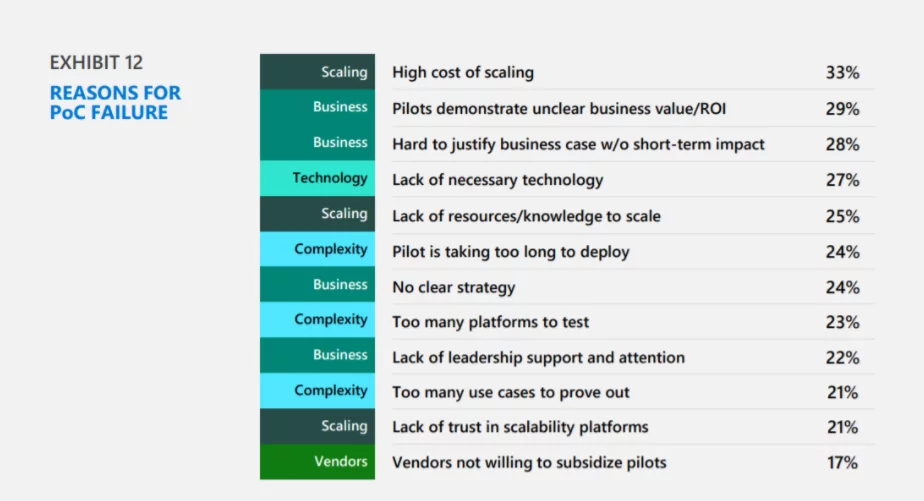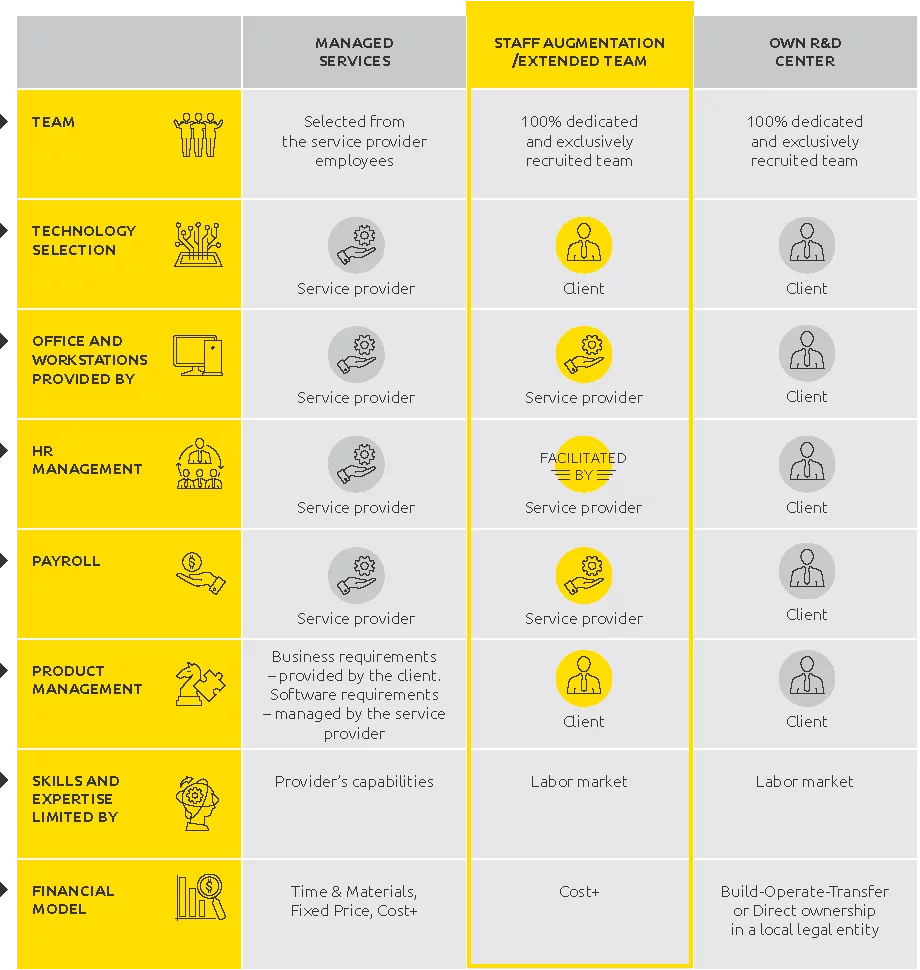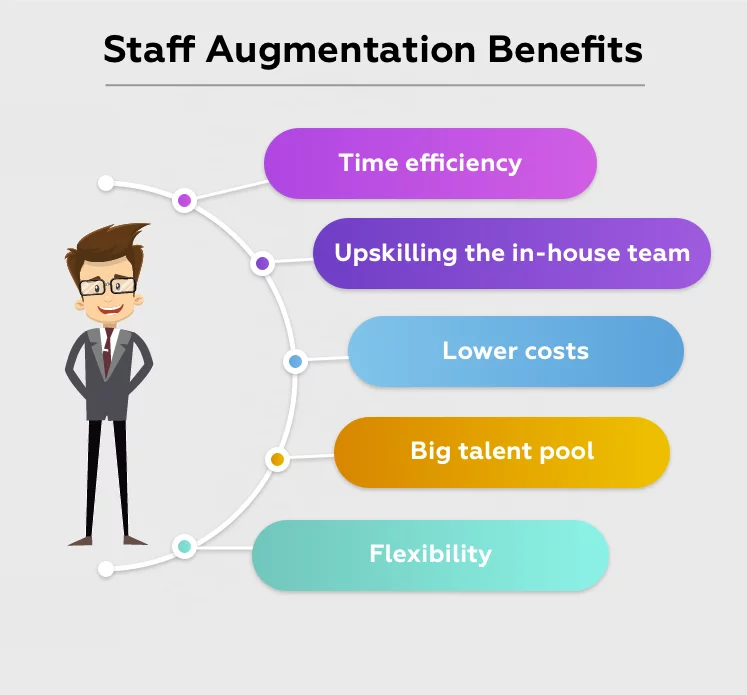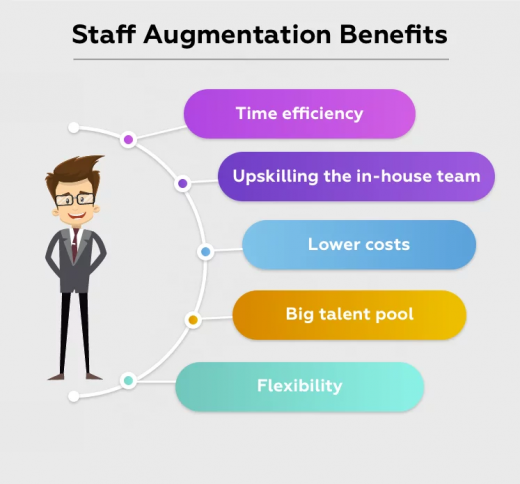Staff Augmentation for the Internet of Things
Staff Augmentation for the Internet of Things

IoT is on the rise and there are no signs of it slowing down. Connected devices have proven to be a good addition to homes, commercial buildings, healthcare facilities, and more. It is estimated that by 2025 the total number of IoT devices will have increased up to 30.9 billion units worldwide.
Still, the IoT development industry faces numerous challenges. One of them is a skills shortage: with the number of IoT projects skyrocketing, it becomes difficult to find and hire new in-house engineers with proven expertise in the Internet of Things.
According to the research, the skill gap is one of the reasons why IoT projects fail at the proof-of-concept stage.
Staff Augmentation for the Internet of Things

On the one hand, you have an IoT project new or ongoing, and you need additional engineers, while on the other hand, there’s a lack of relevant skills out there on the market, impeding the success of the business. So what is the solution? Two words: staff augmentation
What’s staff augmentation
Staff augmentation is a model of outsourcing cooperation. It implies that the client’s existing in-house team is enhanced with the skills of engineers of an IT outsourcing company.
After the project and team evaluation, both client and vendor agree on what engineers need to be added to the team to achieve a goal. Then, the required developers are “rented” from a staff augmentation services provider.

When to opt for team augmentation
Oftentimes, IoT projects require engineers with highly specific skills, like firmware development, that are expensive and hard to employ. In certain cases, team augmentation would be the best possible solution to achieve the desired result.
In particular, choosing to augment the IoT development team would be a good idea when:
- You already have an in-house IoT development team, yet it lacks engineers for a highly specialized role, crucial for the project development
- You need an engineer with specific skills, but not for full-time or for a limited time
- The developer with a vital role in the project is on vacation or sick leave, and you still need to deliver the product in time
- You have a project in production, but want to enhance it or implement new features or technologies, while your team lacks the proficiency to get the job done
Benefits of staff augmentation for IoT projects
Here’s how staff augmentation can help an IoT project.

Time efficiency
Typical talent research, interview, and hiring process in the tech industry can take a month approximately before a developer can start working on a project.
Staff augmentation significantly reduces the hiring time and the interviews are organized by the provider. This way, you interview only the candidates with relevant experience and skills and save time
Upskilling the in-house team
Working alongside practiced IoT developers, the in-house team will be able to learn from their experience. The acquired knowledge can then be used in future IoT projects, or the team can continue the work on the current project on their own.
Lower costs
IoT projects tend to grow fast and require more investment in a dedicated team. Hiring an in-house developer for a highly specialized role may be quite a challenge and cost a pretty penny.
“Renting” an engineer is more cost-effective, especially when choosing a staff augmentation services provider from Ukraine which offers quality services for affordable prices.
Big talent pool
Deciding to augment the team, a project owner is not limited to a certain location to employ engineers. It’s possible to hire candidates from another region or even country with a more favorable job market situation.
This way the project owner won’t need to settle for less and choose from the available options. Instead, they can find the necessary candidates to implement the required solutions.
Flexibility
Some IoT projects happen to only need a highly specialized engineer to complete small but technically complicated tasks. Staff augmentation allows hiring IoT developers only for the required period or for a certain task.
When the goal is achieved, there’s no need to pay for the downtime, and vice versa: if the company needs a developer again, it can hire them again if they are still available.
Challenges of staff augmentation: how to overcome
Overall, team augmentation is considered to be a more efficient way of staffing the dedicated IoT team. Still, there may be some difficulties the project owner should consider when opting for staff augmentation.
Communication difficulties
Hiring engineers from a different country can lead to miscommunication if the augmented developers don’t speak the client’s language. To mitigate this, set up a reporting plan and appoint people responsible for effective communication.
It can be a project manager, a team lead, or another person with sufficient communication skills who can ensure a complete understanding between the client and the team.
Make sure the remote employees have all the information they need to complete the tasks. It’s worth mentioning that all developers of the professional Ukrainian vendors are proficient in English, this will help communicate effectively.
Different time zones
Another challenge is to adjust the schedules for developers from different time zones. If there’s a small overlap in working hours, make sure the “rented” remote employees are comfortable with the team’s schedule or shift the schedule of both to increase the overlap.
Quality of work
Every client is concerned about how the freelancer would perform within a team. It’s especially true for IoT projects, where a single line of wrong code could have dramatic outcomes. An inexperienced or underperforming engineer hired for a highly specialized role could drag the entire team behind.
This may lead to delays in the project delivery, security vulnerabilities, or even to the overall failure of the project. To avoid unintended consequences, choose IoT developers with proven experience in the domain.
High turnover
The other side of flexibility offered by the team augmentation is high staff turnover. Unlike the in-house team that dives deep into the company culture and values, engineers hired for a short time may not have a clear strategic understanding of what way the project should go.
In this case, the lack of involvement could affect the overall success of the venture. To make sure the augmented staff understands the strategy, create a list of responsibilities and a set of steps that the person should follow.
Write down the clear requirements for the current workers and personnel who will work on the project in the future.
How to successfully staff the IoT team
If you decided that staff augmentation is a perfect solution for your needs, there are several recommendations on what to consider when choosing the IoT development team.
1. Check required skills available
IoT projects often need highly specialized knowledge and not every staff augmentation service can claim to have relevant employees. Make sure the team augmentation service is able to provide the developer with the required skills.
2. Check out the portfolio
The deciding factor in choosing remote employees should be the proven experience in IoT. Check out previous projects of the developer, or look at the Clutch reviews of the staff augmentation provider from whom you are going to rent the engineer.
3. Consider the location
Working with a developer in a close time zone would be more convenient. However, some engineers don’t mind shifting their working hours to fit in the team’s time zone, so don’t limit your search only to the close regions.
For instance, destinations like Ukraine are famous for highly skilled professionals and reasonable service prices.
4. Pay attention to the security standards
Make sure your staff augmentation partner can ensure a secure development environment. Sign the NDA to be certain your project can grow without the risk of data leaks or intellectual property issues.
5. Avoid “toxic” employees
Despite the fact that the rented engineer will most likely work remotely, they will still need to cooperate with your in-house team, so a healthy atmosphere is vital. During the interview, don’t forget to check the candidate’s soft skills as well to make sure they will get along with the team.
Conclusion: the future of staff augmentation
Remote work was accepted by numerous IT companies during the pandemic. More likely than not, such a type of work is here to stay even after the quarantine, and this fact contributes to the growing popularity of staff augmentation.
Despite some difficulties, staff augmentation is a convenient cooperation model with numerous benefits and its popularity is not likely to decrease soon.
The complicated technology behind integrating IoT requires deep knowledge, and so far the demand for a specific technical skillset has exceeded the supply. Team augmentation remains one of the most appropriate solutions for the problem.
Image Credit: marley covelly; pexels; thank you!
The post Staff Augmentation for the Internet of Things appeared first on ReadWrite.
(33)


